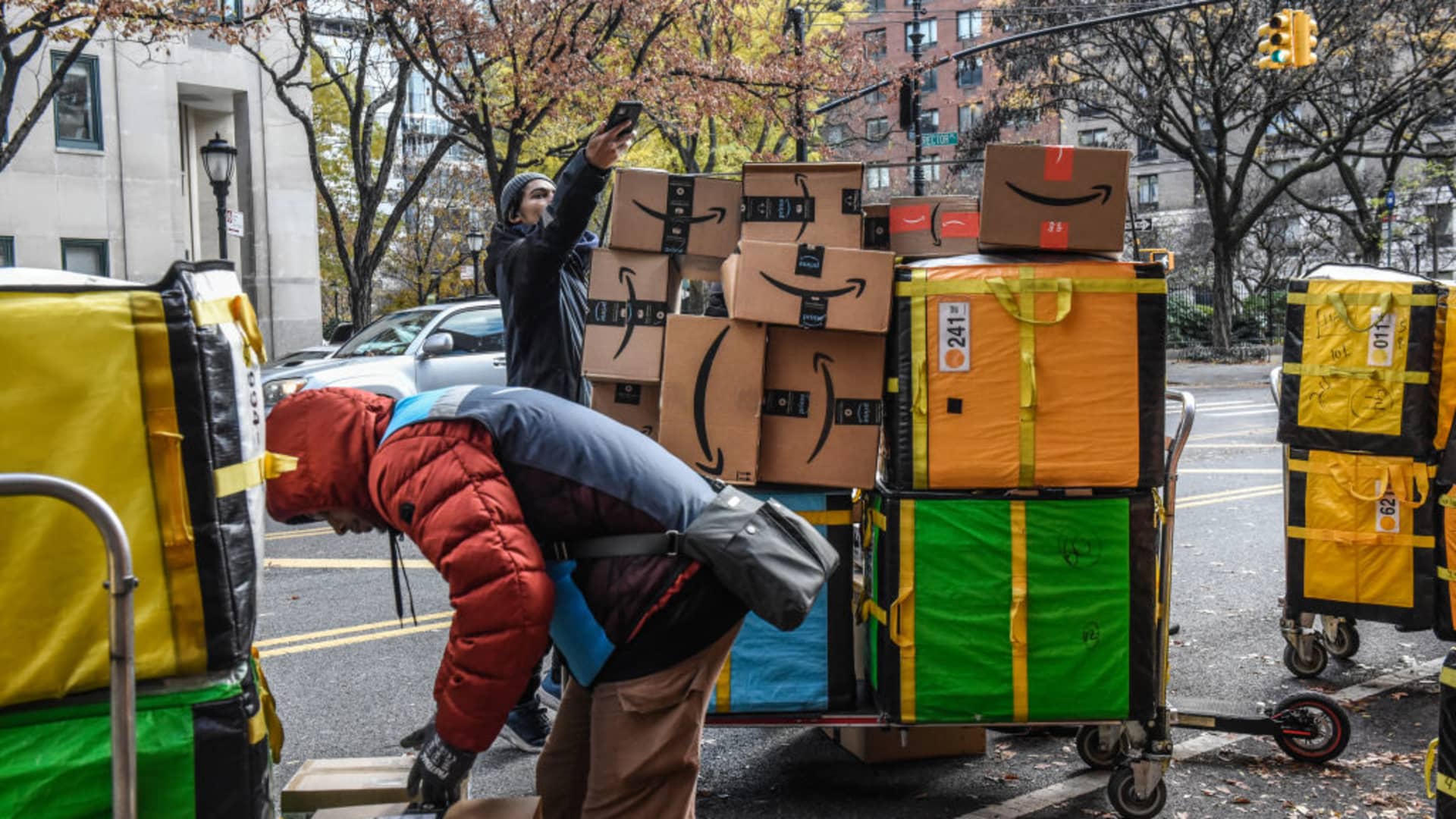The Attorney General of Washington, DC filed suit Amazon On Wednesday, the company was accused of secretly cheating residents in certain ZIP codes in the nation’s capital out of access to Prime’s high-speed delivery.
The lawsuit by AG Brian Schwalb alleges that starting in 2022, Amazon “secretly excluded” two “historically low” DC ZIP codes from its express delivery service and charged Prime members who live there full subscription prices. Amazon’s Prime membership program costs $139 a year and includes perks like two-day shipping and access to streaming content.
“Amazon promises, but does not deliver, fast delivery service to tens of thousands of hard-working Ward 7 and 8 residents,” Schwalb said in a statement. “While Amazon has every right to make operational changes, it cannot secretly decide that a dollar in one zip code is worth less than a dollar in another.”
Amazon spokesman Steve Kelly said in a statement that the company disputes Schwalb’s claims that its business practices are “discriminatory or deceptive.”
“We want to deliver as fast as we can to every zip code across the country, however, at the same time we must put the safety of delivery drivers first,” Kelly said in a statement. “In the zip codes in question, there are specific and targeted actions against drivers who deliver Amazon packages. We have made a deliberate choice to adjust our operations, including delivery routes and timing, for the sole reason of protecting the safety of drivers.”
Amazon is committed to working with the AG’s office to “reduce crime and improve safety in these areas,” Kelly said.
In June 2022, Amazon stopped using its own delivery trucks to shuttle packages in ZIP codes 20019 and 20020 based on concerns over driver safety, the suit says. In place of its internal distribution network, the company relies on outside carriers UPS and the US Postal Service to make deliveries, according to a complaint filed in DC Superior Court.
The decision caused residents in those ZIP codes to “experience significantly longer delivery times than their neighbors in other district ZIP codes, even if paying the exact membership price for Prime,” the lawsuit says.
Data from AG shows that before Amazon instituted the change, more than 72% of Prime packages in the two ZIP codes were delivered within two days of checkout. That number dropped to 24% after the move, while two-day delivery rates across the district rose to 74%.
Amazon has faced complaints in the past about inequities in its Prime program. In 2016, the company He said he would expand Access to same-day delivery in cities including Atlanta, Chicago, Dallas and Washington, D.C A Bloomberg investigation It found that black residents were “about half as likely” to qualify for same-day delivery as white residents.
According to 2022 Census data based on its American Community Survey, Schwalb’s complaint zip codes are in areas with large black populations.
Federal Trade Commission sued Amazon in June 2023Allegedly tricking customers into signing up for Prime and “sabotaging” their attempts to cancel through so-called dark patterns, or deceptive design techniques to steer users toward a particular option. Amazon said the complaint “lies on facts and law.” The case will come up for hearing in June 2025.
According to Schwalb’s complaint, Amazon never communicated the delivery exclusion to Prime members in the region. When customers in affected ZIP codes complained to Amazon about slow delivery speeds, the company said it was due to circumstances beyond its control, the suit says.
The lawsuit alleges that Amazon violated the district’s consumer protection laws. It asks the court to “end Amazon’s deceptive conduct” and for damages and penalties.
To get packages to customers’ doorsteps, Amazon uses a combination of its own contracted delivery companies, usually Amazon-branded cargo vans and distinguishable USPS, UPS and carriers. FedExand a network of gig workers who make deliveries from their own vehicles as part of its Flex program.
Amazon has rapidly expanded its in-house logistics army in recent years as it looks to speed up delivery from two days to one day or even a few hours. In July, the company He said It recorded its “fastest prime delivery speed” in the first half of the year, delivering more than 5 billion items within a day.
By relying on its own workforce, Amazon has gained more control over its delivery operations.
In his complaint, Schwalb cited an internal company policy that says Amazon can choose to exclude certain areas from its internal delivery network if a driver experiences “violence, intimidation or harassment.” The Company relies on UPS or USPS to deliver packages in excluded areas.
Watch: Amazon is betting on consumers shopping while tuning into the Black Friday game





